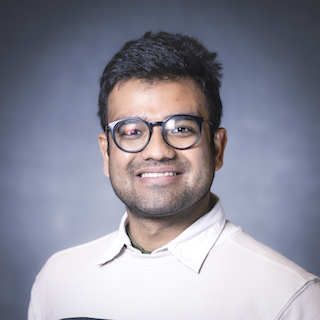About
Education
Ph.D. in Hydrology
Department of Earth and Planetary Sciences, Jackson School of Geosciences, University of Texas at Austin (2021–present)
Dissertation: Flow and transport processes in supra-permafrost aquifers in the Arctic.
Advisors: Dr. M. Bayani Cardenas, Dr. Ann Jingyi ChenIntegrated B.S. & M.S. in Exploration Geophysics
Department of Geology and Geophysics, Indian Institute of Technology, Kharagpur (2016–2021)
Thesis: Numerical modeling of seawater intrusion considering diurnal head changes and matrix compression-rebound. DOI
Advisors: Dr. Abhijit Mukherjee, Dr. Aditya Bandyopadhyay
Research Focus
I investigate groundwater flow and reactive solute transport in Arctic permafrost landscapes, with particular emphasis on the supra-permafrost aquifer zone. My work aims to understand how thawing permafrost and changing climate conditions influence carbon cycling, groundwater discharge, and greenhouse gas emissions.
I integrate field observations, laboratory experiments, remote sensing data, and numerical modeling using high-performance computing. My approach focuses on developing mechanistic frameworks to quantify the movement of heat, nutrients, and carbon through complex subsurface environments.
Updates
- April 2025 – Awarded a DOE Earth System Science PI Meeting Travel Grant to present the poster Impacts of Changing Hydrologic Conditions on Groundwater Flow and Reactive Solute Transport in Supra-Permafrost Aquifers at the annual PI meeting in Reston, Virginia.
- February 2025 – Received the Outstanding Student Presentation Award (OSPA) at the AGU Fall Meeting, Washington, DC. LINK
- December 2024 – Delivered a research talk: Impacts of Climate Conditions on Groundwater Flow and Reactive Solute Transport in Supra-Permafrost Aquifers, AGU Fall Meeting, Washington, DC. LINK
- October 2024 – Won 1st Place at the Jackson School of Geosciences Hackathon on computational reproducibility. LINK
- September 2024 – Published a first-author paper in Journal of Hydrology:
Mukherjee, N., et al. (2024). Water and carbon fluxes from a supra-permafrost aquifer to a stream across hydrologic states. DOI - September 2024 – Co-authored a paper selected as Editor’s Choice in Physics of Fluids:
Virappane, S., Azadi, R., Mukherjee, N., and Tsai, P. A. (2024). Three-dimensional simulations of two-phase plug flow in a microfluidic channel. DOI - April 2024 – Awarded a DOE Earth System Science PI Meeting Travel Grant for research presentation in Reston, Virginia.
- December 2023 – Abstract selected for a poster at the AGU Fall Meeting: Investigating Groundwater Flow and Thermal Transport in Arctic Supra-Permafrost Aquifers.
- November 2023 – Received the CUAHSI Reactive Transport Workshop Travel Grant (hosted at Pacific Northwest National Laboratory).
- May 2023 – Awarded an Off-Campus Research Grant by the Jackson School of Geosciences for Arctic fieldwork at Toolik Field Station, Alaska.
- December 2022 – Delivered an oral presentation at the AGU Fall Meeting, Chicago:
Supra-permafrost groundwater’s contribution to stream flow and organic matter chemistry in the Arctic: estimation using combined mechanistic and statistical approaches LINK - December 2021 – Oral presentation at the AGU Fall Meeting, New Orleans:
Characterizing Rayleigh-Taylor Instability and Convection in a Porous Medium with Geoelectric Monitoring. LINK - December 2021 – Received the Prof. Supriya Mohan Sengupta Memorial Award for Best Master’s Thesis from IIT Kharagpur.
- January 2020 – Awarded the University of Alberta Research Experience (UARE), a fully funded research internship.
- May 2019 – Received the CNRS Research Fellowship for a summer internship at Geosciences Rennes, France.
- 2016–2021 – Awarded the Inspire Scholarship by the Department of Science and Technology, Government of India: awarded full tuition support for pursuing undergraduate studies at IIT Kharagpur.
About My Origin
I am originally from Kolkata, the capital city of West Bengal in India, often called the City of Joy. Kolkata is known for its history, intellectual rigor and cultural richness. I developed an early interest in mathematics and physics from my school days at Nava Nalanda. This attracted me towards the elegant complexity of fluid mechanics in my early college days. That curiosity found its direction in college, where I became fascinated by the elegant chaos of fluid mechanics. Whether in rivers, reservoirs, pipes, or airfoils—if it flowed, I wanted to understand it.
Naturally, this fascination found wheels when I joined TeamKART, the Formula SAE student team at IIT Kharagpur. As part of the vehicle dynamics group, I worked on CFD simulations and design optimizations on aero, chassis, & suspension systems. There’s something thrilling about seeing your code turn into carbon fiber and speed—those years were unforgettable and still make for great stories during coffee breaks.
Over time, my interest in flow shifted gears—from engineered machines to natural landscapes. I became intrigued by how fluids move through porous media like soil, rock, and permafrost, and how such movement shapes ecosystems and climate feedbacks. This growing obsession led me toward hydrology, particularly computational hydrology, where physics, Earth science, and high-performance computing converge.
My academic journey has since taken me from the warmth of Kolkata and Kharagpur to the heat of Texas and the chill of the Arctic, where I now study subsurface flow, thawing permafrost, and reactive transport using fieldwork and numerical models. Outside of research, I enjoy traveling to places colder than my dataset, hiking in unfamiliar terrains, playing the violin, and photographing natural landscapes—often looking for fluid patterns even when none are required.
